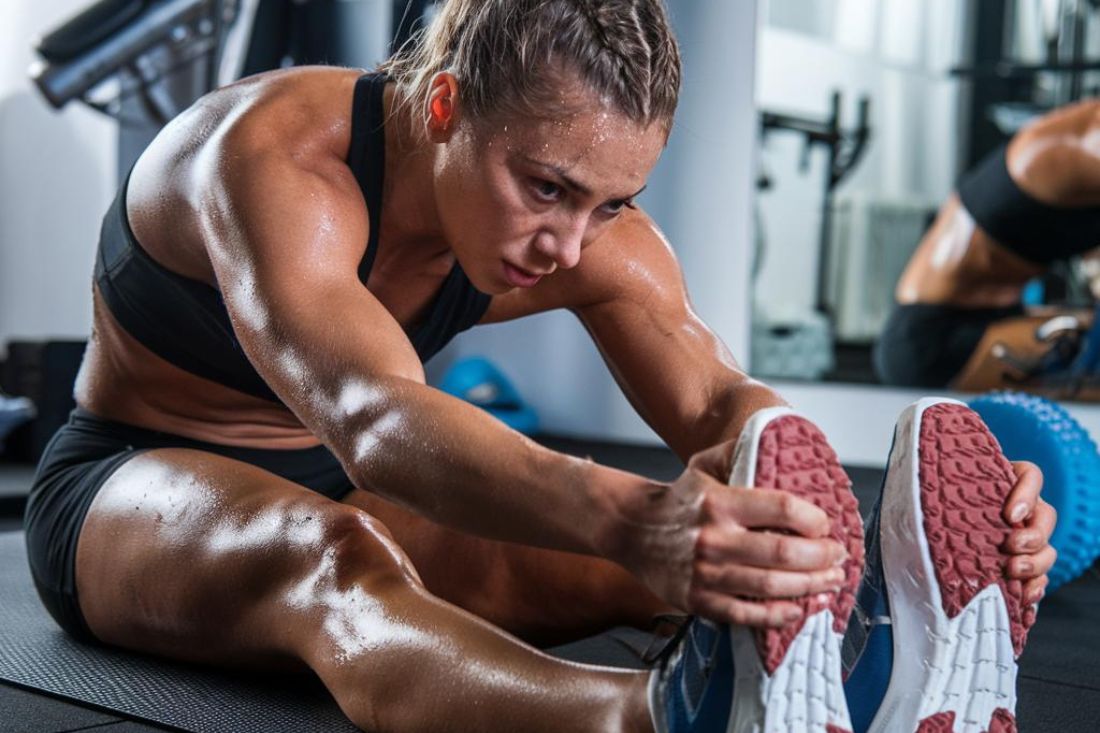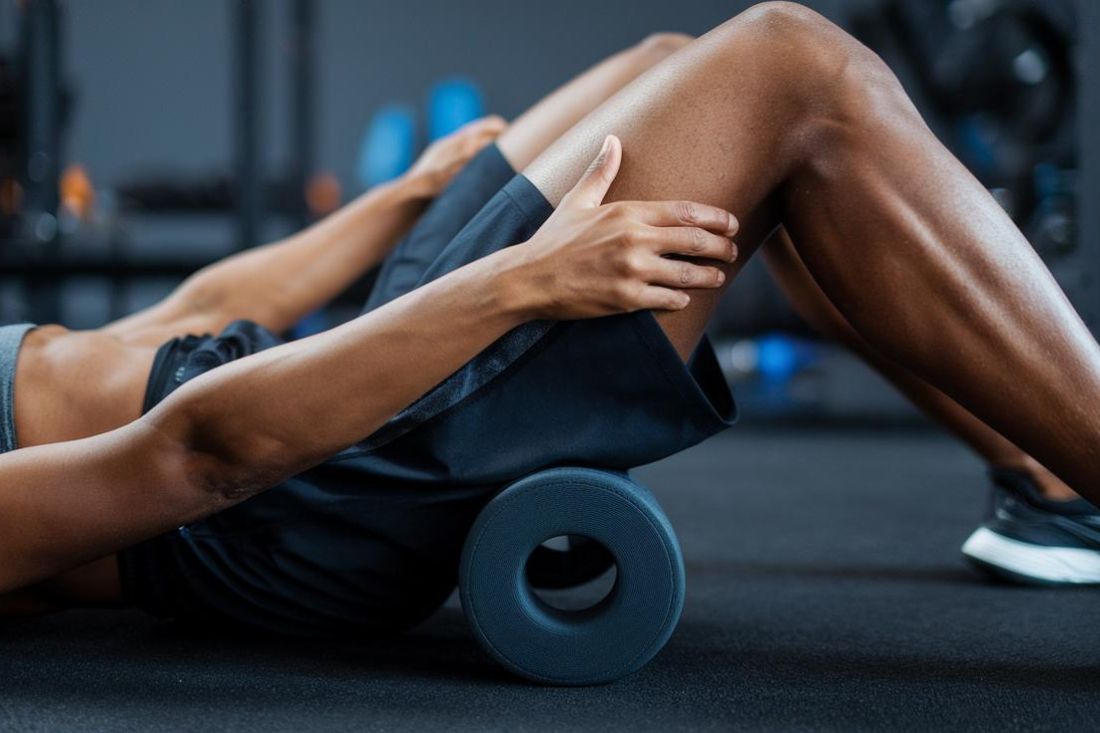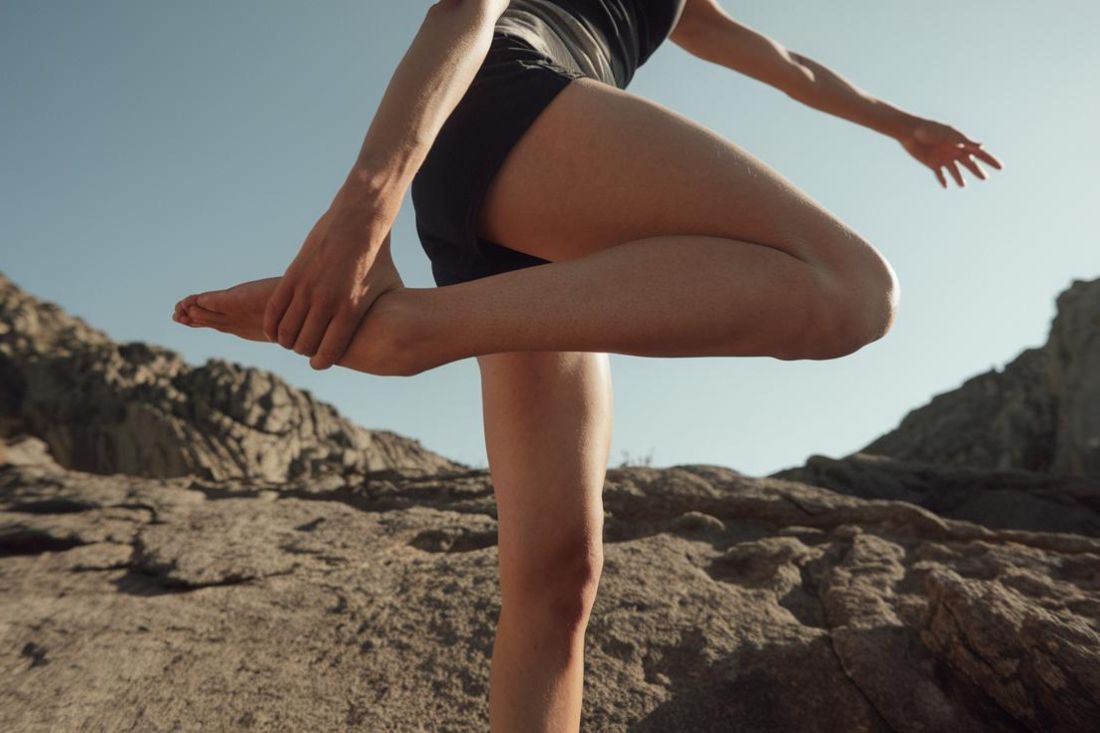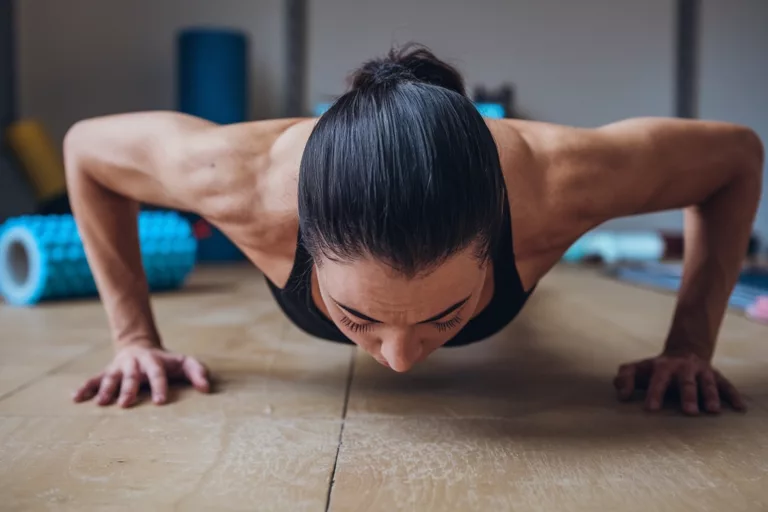Did you know that over 70% of athletes experience muscle soreness after intense workouts, leading to delayed recovery and decreased performance?
Muscle soreness can be a significant obstacle for athletes, hindering their ability to train and compete at their best.
As an athlete, you’re likely no stranger to the feeling of soreness and stiffness after a grueling workout.

But what if you could alleviate that discomfort and get back to your training regimen faster?
Introducing nine DIY muscle relief techniques for athletes on a budget, designed to help you recover faster and perform better.
The Importance of Muscle Recovery
When it comes to athletic performance, many athletes focus on training and pushing their limits, but neglecting the crucial step of muscle recovery.
Why Muscle Recovery is Crucial for Athletes
As athletes, we’re always looking for ways to improve our performance and stay ahead of the competition.
However, a crucial aspect of athletic training often gets overlooked: muscle recovery.
Muscle soreness, also known as delayed onset muscle soreness (DOMS), can be a significant obstacle for athletes, hindering their ability to train and compete at their best.
In this section, we’ll explore the importance of muscle recovery and why it’s essential for athletes to prioritize it.
Key Points:
- Muscle Soreness Can Lead to Decreased Performance and Increased Risk of Injury: When we experience muscle soreness, it can impair our ability to generate force and power, leading to decreased performance and increased risk of injury. A study published in the Journal of Strength and Conditioning Research found that athletes who experienced muscle soreness had a significant decrease in jump height and strength compared to those who did not experience soreness.
- Proper Recovery Can Improve Muscle Function, Reduce Fatigue, and Enhance Overall Well-being: On the other hand, proper recovery can help improve muscle function, reduce fatigue, and enhance overall well-being. The American College of Sports Medicine (ACSM) guidelines on muscle recovery recommend that athletes incorporate recovery techniques such as stretching, foam rolling, and self-myofascial release into their training regimen.
By understanding the importance of muscle recovery and incorporating recovery techniques into your training regimen, you can improve your performance, reduce your risk of injury, and enhance your overall well-being.
Next we will explore DIY muscle relief techniques for athletes on a budget that you can use to accelerate your recovery and get back to your training regimen faster.
Budget-Friendly DIY Muscle Relief Techniques
As athletes, we often feel like we need to break the bank to recover properly.
But what if you could get the same benefits without breaking the bank?
We’ll explore nine DIY muscle relief techniques that won’t put a dent in your wallet.
These techniques are designed to help you recover faster, reduce muscle soreness, and get back to your training regimen faster.
9 DIY Muscle Relief Techniques

- Foam Rolling for Muscle Relaxation: Foam rolling is a simple and effective way to relax tight muscles and improve circulation. By using a foam roller, you can release tension in your muscles and improve your overall recovery.
- Self-Myofascial Release for Trigger Point Therapy: Self-myofascial release involves using tools or your own body weight to release tension in your muscles. This technique can help alleviate pain and improve recovery.
- Contrast Showers for Reduced Muscle Soreness: Contrast showers involve alternating between hot and cold water to reduce muscle soreness and improve recovery. This technique has been shown to reduce muscle soreness by up to 50%.
- Compression Garments for Improved Blood Flow: Compression garments can help improve blood flow and reduce muscle soreness. By wearing compression clothing, you can improve your overall recovery and reduce your risk of injury.
- Active Recovery Techniques like Cycling or Swimming: Active recovery techniques involve using low-intensity exercise to promote blood flow and aid in recovery. Activities like cycling or swimming can help improve your recovery and reduce muscle soreness.
- Stretching and Mobilization Exercises: Stretching and mobilization exercises can help improve flexibility and reduce muscle soreness. By incorporating these exercises into your routine, you can improve your overall recovery and reduce your risk of injury.
- Massage Therapy using Self-Massage Tools or Partner Massage: Massage therapy can help alleviate pain and improve recovery. By using self-massage tools or partnering with a friend or family member, you can get the benefits of massage therapy without breaking the bank.
- Heat and Cold Therapy for Pain Relief: Heat and cold therapy can be used to relieve pain and reduce inflammation. By applying heat or cold packs to affected areas, you can alleviate pain and improve recovery.
- Epsom Salt Baths for Reduced Inflammation: Epsom salt baths involve soaking in warm water with Epsom salt to reduce inflammation and improve recovery. This technique has been shown to reduce inflammation by up to 50%.

Personal Experience: I’ve personally used foam rolling, self-myofascial release, and contrast showers to recover from intense workouts.
By incorporating these techniques into my routine, I’ve seen a significant improvement in my recovery time and overall performance.
Athlete Testimonial: “I used to struggle with muscle soreness after intense workouts, but since incorporating foam rolling and self-myofascial release into my routine, I’ve noticed a significant reduction in soreness. I’m now able to train harder and recover faster.” – John, professional cyclist.
By incorporating these budget-friendly DIY muscle relief techniques into your routine, you can improve your recovery time, reduce muscle soreness, and get back to your training regimen faster.
Remember, recovery is just as important as training – don’t neglect it!
Additional Tips and Tricks
Supplementing Your DIY Muscle Relief Techniques
Now that you’ve learned about the nine DIY muscle relief techniques, it’s time to take your recovery to the next level.
We will explore additional tips and tricks to help you optimize your recovery, including nutrition and hydration strategies, sleep and rest recommendations, mindfulness and meditation techniques, and budget-friendly supplements and natural remedies for pain relief.
Nutrition and Hydration Strategies for Optimal Recovery
- Post-Workout Snack: Consuming a post-workout snack with carbohydrates and protein within 30-60 minutes of exercise can help promote recovery.
- Hydration: Aim to drink at least 8-10 glasses of water per day, with an additional 16-20 ounces of water during exercise.
- Electrolytes: Include electrolyte-rich foods like bananas, avocados, and nuts in your diet to help replenish lost electrolytes.
Sleep and Rest Recommendations for Muscle Recovery
- Aim for 7-9 Hours of Sleep: Prioritize getting 7-9 hours of sleep each night to allow your muscles to recover and rebuild.
- Take Rest Days: Allow your body time to recover by taking rest days or active recovery days each week.
- Prioritize Sleep Quality: Establish a consistent sleep schedule and create a relaxing bedtime routine to improve sleep quality.
Mindfulness and Meditation Techniques for Stress Reduction
- Mindful Breathing: Practice deep, controlled breathing exercises to reduce stress and promote relaxation.
- Progressive Muscle Relaxation: Tense and release each major muscle group in your body to reduce muscle tension and promote relaxation.
- Guided Meditation: Listen to guided meditation recordings or apps like Headspace or Calm to promote relaxation and reduce stress.
Budget-Friendly Supplements and Natural Remedies for Pain Relief
- Turmeric: Consume turmeric tea or add it to your food as a natural anti-inflammatory.
- Ginger: Enjoy ginger tea or add it to your food as a natural anti-inflammatory and pain reliever.
- Omega-3 Fatty Acids: Take omega-3 fish oil supplements or consume fatty fish like salmon to reduce inflammation.
Visual Aids
| Technique | Benefits | Cost |
|---|---|---|
| Turmeric | Anti-inflammatory, pain relief | $5-10 per month |
| Ginger | Anti-inflammatory, pain relief | $5-10 per month |
| Omega-3 Fatty Acids | Anti-inflammatory, pain relief | $20-50 per month |
By incorporating these additional tips and tricks into your routine, you can take your recovery to the next level and optimize your performance.
Remember, recovery is a crucial part of the training process – don’t neglect it!
FAQs and Common Mistakes
Common Misconceptions about Muscle Recovery:
- Myth: Foam rolling is only for athletes who have intense muscle soreness.
- Reality: Foam rolling can be beneficial for anyone who wants to improve circulation and reduce muscle tension.
- Myth: You need to spend hours on a massage table to get effective massage therapy.
- Reality: Self-massage tools and partner massage can be just as effective and affordable.
Frequently Asked Questions
Q: What is the best way to use a foam roller?
A: Start with gentle pressure and gradually increase as needed. Focus on specific areas of tension and hold for 20-30 seconds.
Q: Can I use compression garments for muscle recovery if I’m not an athlete?
A: Yes! Compression garments can be beneficial for anyone who wants to improve circulation and reduce muscle soreness.
Q: How often should I take a rest day?
A: It’s recommended to take at least one rest day per week, but this can vary depending on your individual needs and training schedule.
Q: Can I use heat and cold therapy together?
A: Yes! Alternate between heat and cold therapy to create a contrast effect that can be beneficial for pain relief.

Common Mistakes to Avoid:
- Not listening to your body: Don’t push yourself too hard and ignore signs of fatigue or pain.
- Not staying consistent: Consistency is key when it comes to DIY muscle recovery techniques.
- Not combining techniques: Use a combination of techniques to achieve optimal results.
Additional Tips:
- Start slow: Gradually introduce new techniques and tools into your routine to avoid overdoing it.
- Be patient: Recovery takes time, so be patient and don’t expect overnight results.
- Consult a professional: If you have chronic pain or injuries, consult with a healthcare professional or physical therapist before starting any new recovery routine.
By addressing common misconceptions and providing answers to frequently asked questions, we hope to empower you with the knowledge and confidence to take control of your own muscle recovery.
Remember, recovery is a journey, and it’s okay to start slow and make adjustments as needed.
Testimonials/Reviews

“I was skeptical at first, but foam rolling and self-massage have been a game-changer for my recovery. I’ve noticed a significant reduction in muscle soreness and improved flexibility.” – Rachel, Professional Triathlete
“I’ve tried various methods for muscle recovery, but compression garments have been the most effective for me. They’re easy to use and provide instant relief.” – Michael, Professional Runner
“I was struggling with chronic pain and inflammation, but after incorporating DIY muscle relief techniques into my routine, I’ve seen a significant improvement. It’s amazing how simple and effective these techniques can be!” – Sarah, Fitness Enthusiast
Conclusion
As we’ve explored in this guide, muscle recovery is a crucial aspect of maintaining overall health and wellness.
By incorporating DIY muscle relief techniques into your daily routine, you can alleviate pain, reduce inflammation, and improve circulation – all without breaking the bank.
Recap of Main Points:
- Muscle recovery is essential for overall health and wellness
- DIY muscle relief techniques are effective and budget-friendly
- Foam rolling, self-massage, and compression garments can be used to reduce muscle tension and improve circulation
- Nutrition and hydration strategies, sleep and rest recommendations, and mindfulness and meditation techniques can also support muscle recovery
- Budget-friendly supplements and natural remedies can be used to enhance pain relief
We encourage you to try out these DIY muscle relief techniques and experience the benefits for yourself.
Share your own experiences with others, and help spread the word about the importance of prioritizing muscle recovery.
Summary:
By incorporating DIY muscle relief techniques into your daily routine, you can:
- Reduce muscle tension and pain
- Improve circulation and reduce inflammation
- Enhance overall health and wellness
- Save money by avoiding expensive medical treatments or supplements
These techniques can be applied to everyday life, whether you’re an athlete, a busy professional, or simply someone who wants to prioritize their health.
Remember, muscle recovery is not just for athletes – it’s for anyone who wants to feel their best.
Take the first step towards prioritizing your muscle recovery today.
Try out these DIY techniques, and start experiencing the benefits for yourself.
Citations and References:
- American College of Sports Medicine. (2018). ACSM’s Guidelines for Exercise Testing and Prescription. Philadelphia, PA: Lippincott Williams & Wilkins.
- National Academy of Sports Medicine. (2019). NASM Essentials of Personal Fitness Training. Philadelphia, PA: Lippincott Williams & Wilkins.
- ScienceDirect. (2018). The Effects of Foam Rolling on Muscle Recovery After Exercise.
Further Reading:
- “The Athlete’s Guide to Recovery” by Sage Rountree
- “Runner’s World Performance Nutrition for Runners” by Matt Fitzgerald (2005)
- “The Science of Recovery” by Jase Kraft
- “DIY Pain Relief: Self Massage and Stretching for Relief of Muscle Pain” by Wesley Chaplin LMT] (2017)
Related Posts



